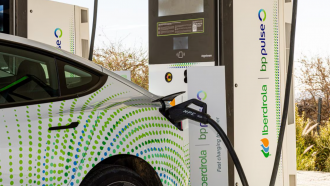Scientists have created synthetic embryos in the laboratory using mouse cells. What makes these embryos special is that they were built without sperm and eggs.
Blastocyst
A few days after a mammal egg is fertilized, it develops into a blastocyst, a hollow sphere formed by a few cells divided into an outer layer that later develops into the placenta and a small cluster at the center, which develops into the future embryo.
In the new study published in the journal Nature on May 2, Nicolas Rivron, from Hubrecht Institutes in The Netherlands, and colleagues assembled stem cell lines that correspond to these sub-types in a manner that would trigger self-organization,
Bundles of mouse stem cells self-organized into proto-embryos initiating pregnancy when these were implanted into mouse wombs. These embryos in a dish that were attached to the womb lining of live mice grew for a few days.
"Here we report that trophoblast and embryonic stem cells cooperate in vitro to form structures that morphologically and transcriptionally resemble embryonic day 3.5 blastocysts, termed blastoids," researchers wrote in their study. "Like blastocysts, blastoids form from inductive signals that originate from the inner embryonic cells and drive the development of the outer trophectoderm."
Rivron and colleagues, however, did not expect that the procedure will produce a viable embryo. The experiment neither did so.
"This is a pity for basic research because it would be very useful to have a limitless supply of human blastocyst-like stage embryos to understand the relevant cell-cell interactions required to make normal embryos and to study mechanisms of implantation," said Robin Lovell-Badge, from the Francis Crick Institute in the United Kingdom.
"However, it may come as a relief to others that such a method of producing many genetically identical human embryo-like structures that might be capable of implantation is not feasible.
Failed Pregnancies
The breakthrough, however, could provide important insights into why many pregnancies fail at an early stage, during the implantation. Researchers said that the process may help with human fertility.
About two-thirds of in vitro fertilization (IVF) treatments fail and this often happens during implantation in the uterus. The cause for this remains largely unknown.
"This breakthrough has opened up the black box of early pregnancy," said Rivron.
The researchers said that these early synthetic embryos all have the cell types needed for the formation of a whole organism.
"They will help us better understand the hidden processes at the start of life, to find solutions for fertility problems, and to develop new drugs without the use of lab animals."









